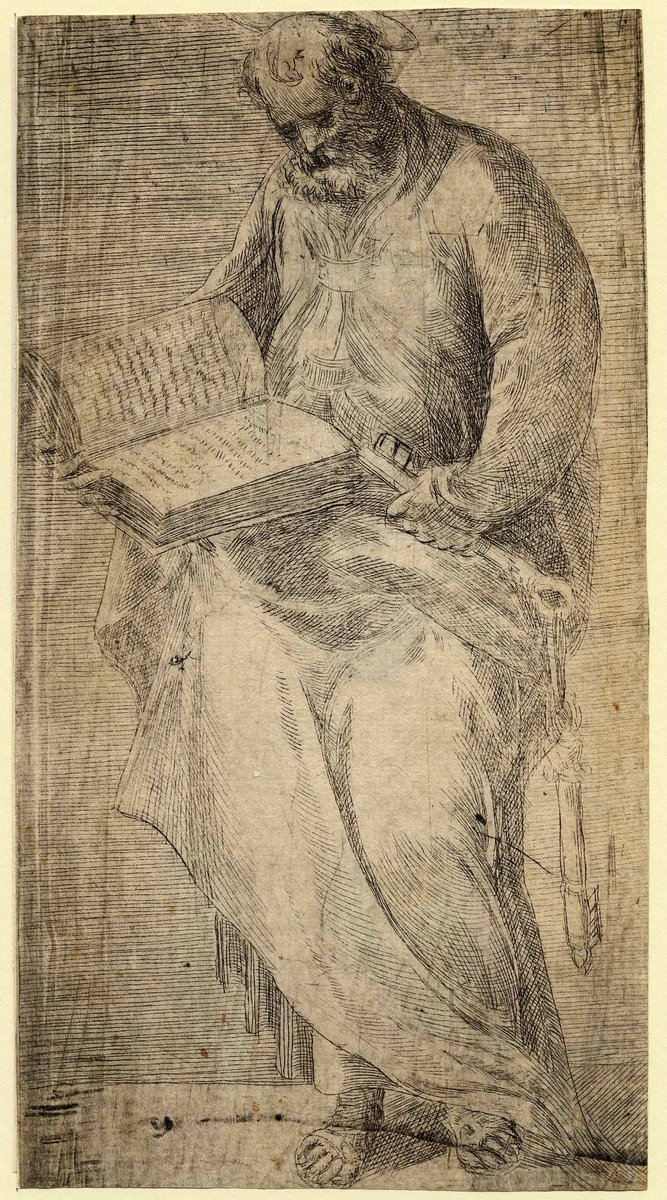
Saint Peter, from the series of Christ and the twelve Apostles
Prints and Drawings
| Artist | |
|---|---|
| Culture | Austrian |
| Date | 1915 |
| Object type | drawing |
| Medium, technique | pencil, watercolour, gouache on paper |
| Dimensions | 485 × 327 mm |
| Inventory number | 1915-933 |
| Collection | Prints and Drawings |
| On view | This artwork is not on display |
The artistic career of Egon Schiele, the outstanding representative of Austrian Expressionism, was unfortunately limited to merely ten years. At the outset, it was the Viennese Secession, particularly the decorative style of Gustav Klimt, that influenced him, and about 1910 he found his own unmistakable, original formal language, which proved to be perfectly suited to the expression of the deepest secrets of the human soul and the revelation of the realm of instinct. His compositions reached Budapest relatively early, featuring already in group shows at the M?vészház (House of Artists) in 1912 and 1913. In October 1915, Galerie Arnot in Vienna sent a dozen drawings to the Museum of Fine Arts Budapest, accompanied by a proposal for purchase, which included, among others, the works of Gustav Klimt, Egon Schiele and Oskar Kokoschka. Perhaps it can be explained by the circumstances of wartime that the museum purchased only one work in all: eighty crowns were paid for the masterpiece completed just a few months prior by Schiele, who had already made a name for himself, though he was just twenty-five. This was TwoWomen Embracing, acquired as the first sheet by the artist for the Collection of Prints and Drawings, made in 1915 when Schiele married Edith Harms, from a well-off bourgeois family. He hoped for a more consolidated life, but the June wedding was overshadowed by the artist’s call-up for the draft. This important event in his private life may easily explain why pairs of lovers feature much more frequently in his work than previously. There existed no taboo or constraint for Schiele: with embarrassing directness, he presents bodies entwined in the act of love, and more than once, pairs of the same gender, which he often entitled provocatively “friendship”. Around 1911 the subject of Lesbianism first appeared in his drawings, not without precedent in the overwrought milieu of Viennese eroticism at the turn of the century. It would suffice to mention the drawings of Klimt, but Toulouse-Lautrec certainly also provided an impulse, whose 1909 exhibition in Vienna significantly influenced the art of Schiele stylistically as well.
In his drawing, Schiele practically intrusively exposes the tete-a-tete of the Lesbian couple. He employed his own particular view from above, so that the figures seem to float in space. The striking framing of the image only reinforces this sensation: only the upper bodies of the figures are visible, the drawing suddenly breaking off at their knees. The intertwined bodies practically pry open the composition. While one of the faces adhering to each other is unperturbed and mask-like, the naked girl with long hair casts a gaze at the viewer with unabashed calm. Her unclothed body describing a diagonal line across the sheet is doubly emphasised againt the scalloped-edged, red skirt hiked up around her partner. This drawing masterfully renders perceptible the change manifest in the artist’s attitude circa 1914: the angularity characteristic of his earlier nude depictions, through his use of colour and shading, was replaced by a style that more vigorously suggested the curvaceousness and protrusions of the body. In contrast with the depiction of bodily proximity, Schiele’s drawing is imbued with melancholy and loneliness, instilling a sensation of abandonment.
Text: © Zsuzsa Gonda
This record is subject to revision due to ongoing research.